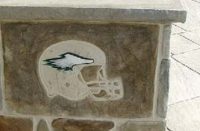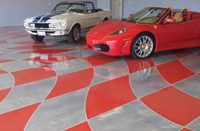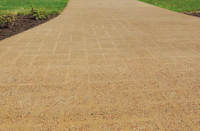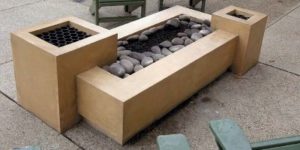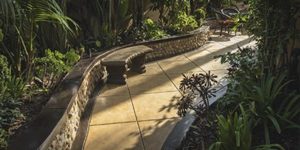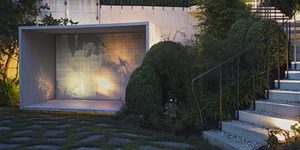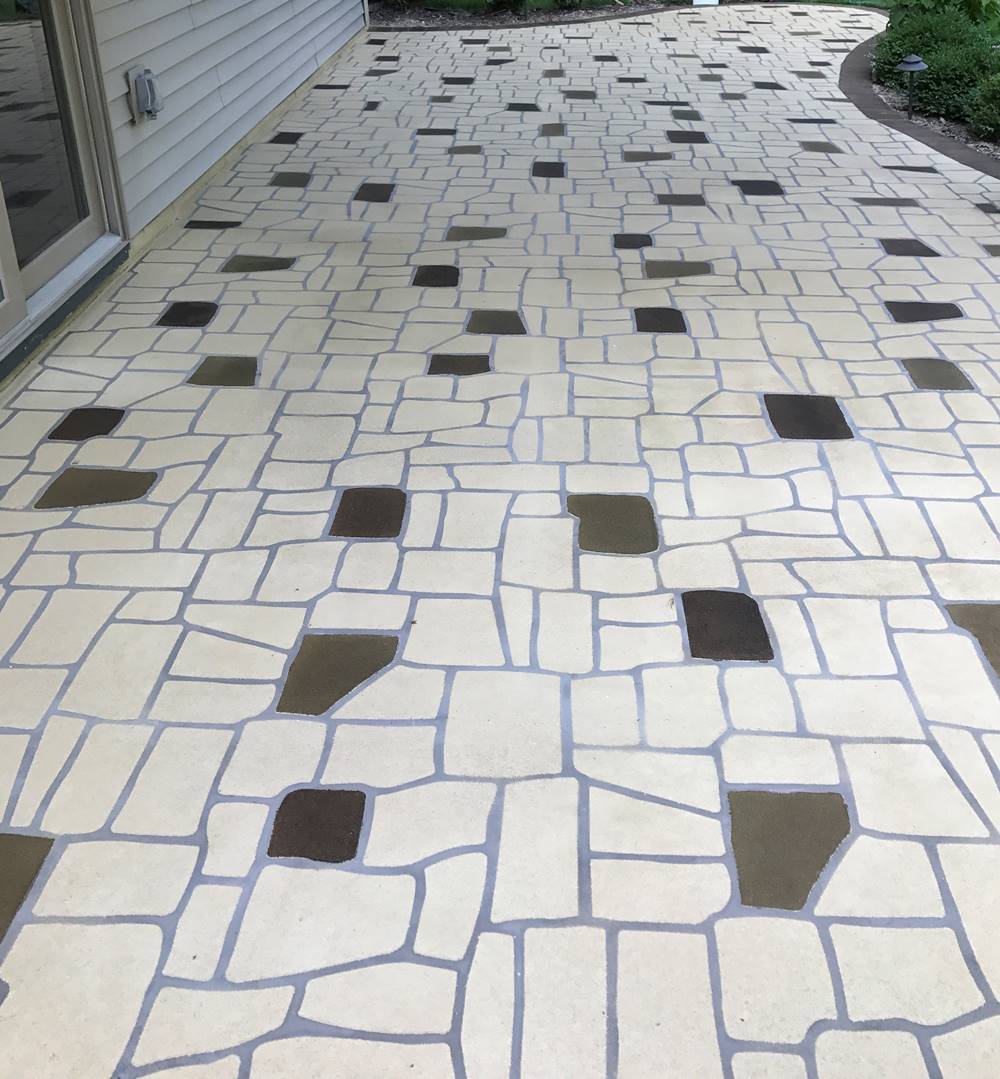
Photos courtesy of Concrete Science
What are homeowners to do when they tire of a cracked concrete patio? Well, the expensive route involves tearing it out and replacing it. But there’s a better, more economical solution that will yield lasting results.
Have the patio stenciled.
When properly placed, random stone stencils on patios can work wonders. “We can hide cracks with creative coloring,” says Chase Hicks, vice president of operations for Concrete Science in Minneapolis, Minnesota. In addition to coloring, aligning a stencil’s grout lines with a patio’s existing cracks can also hide defects.
Hicks says Concrete Science is a family-run business, which employs three generations of kin including his father and grandfather. The company promotes using semitransparent stains to color stones where cracks are prominent.
“We usually use dark brown or black water-based stains,” Hicks says. “Water-based stains react well with the cement-based products we use as a base coat. We hide the cracks by staining (what looks like) random stones. If the cracks come back, they can be easily repaired.”
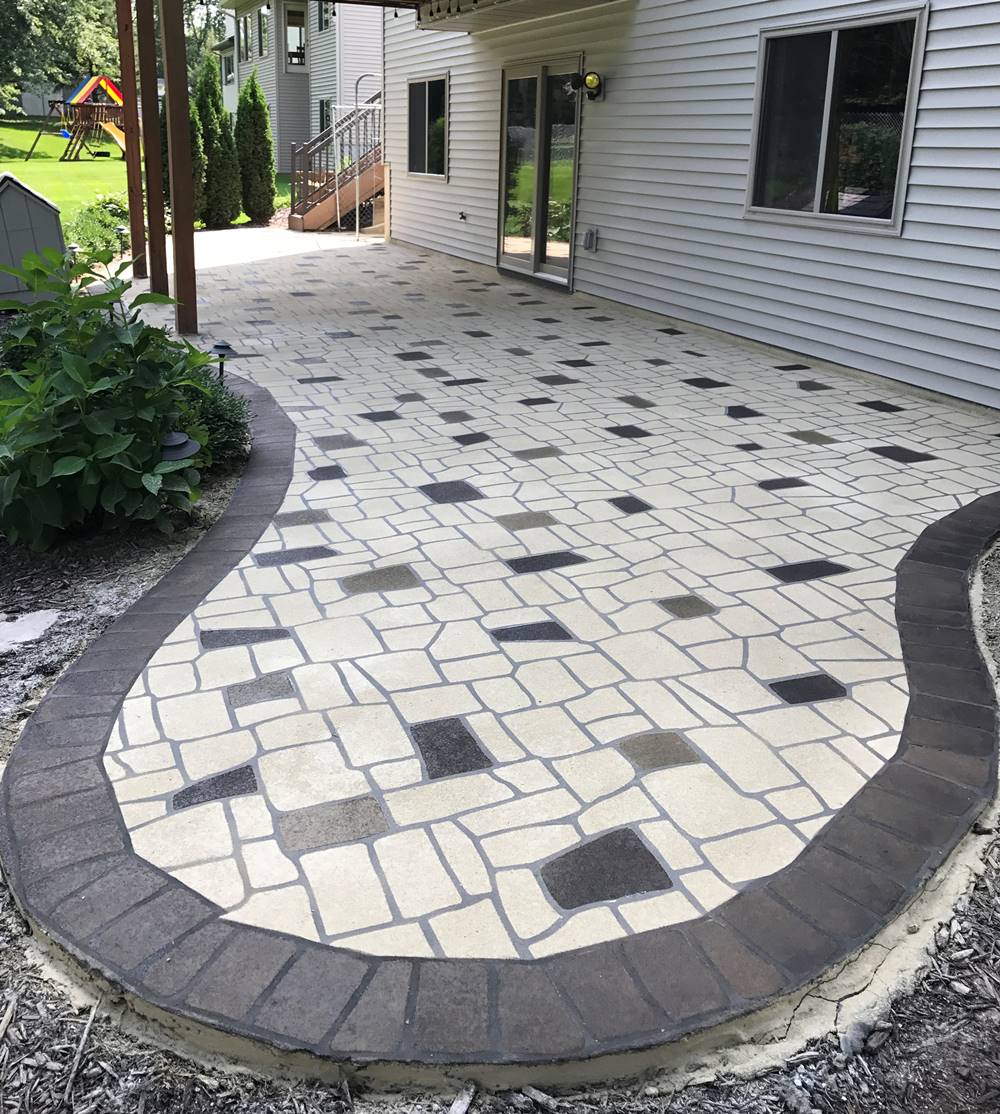
Advantages of stencils
By far and away, using concrete stencils for patios has many advantages over stamping. “We use way less product and offer more design options. It’s also a lot less labor intensive and it’s easier to train new guys how to use stencils,” Hicks says.
“Stamped overlays,” he adds, “are one of the hardest things to do in the concrete world.”
Overall, compared to stamping, stencils generate a greater profit margin and repairs are much easier, Hicks says.
Concrete Science’s most popular patterns are Flagstone, Keystone and Bushrock, random stone patterns readily available from Decorative Concrete Impressions through the Concrete Decor Store. DCI, which has an extensive stencil line, is always prompt and polite, Hicks says, and a pleasure to work with.
Process is easy
Day one of a typical patio project starts with grinding off the previous coating and repairing cracks. Next, a crew of two to three squeegees on a dark, integrally colored basecoat. “This will be the grout color,” Hicks says. The mix is a cement-based polymer hybrid blended with liquid pigment.
After that dries, the crew lays out the stencil, using sections of roof shingles to initially keep it in place.
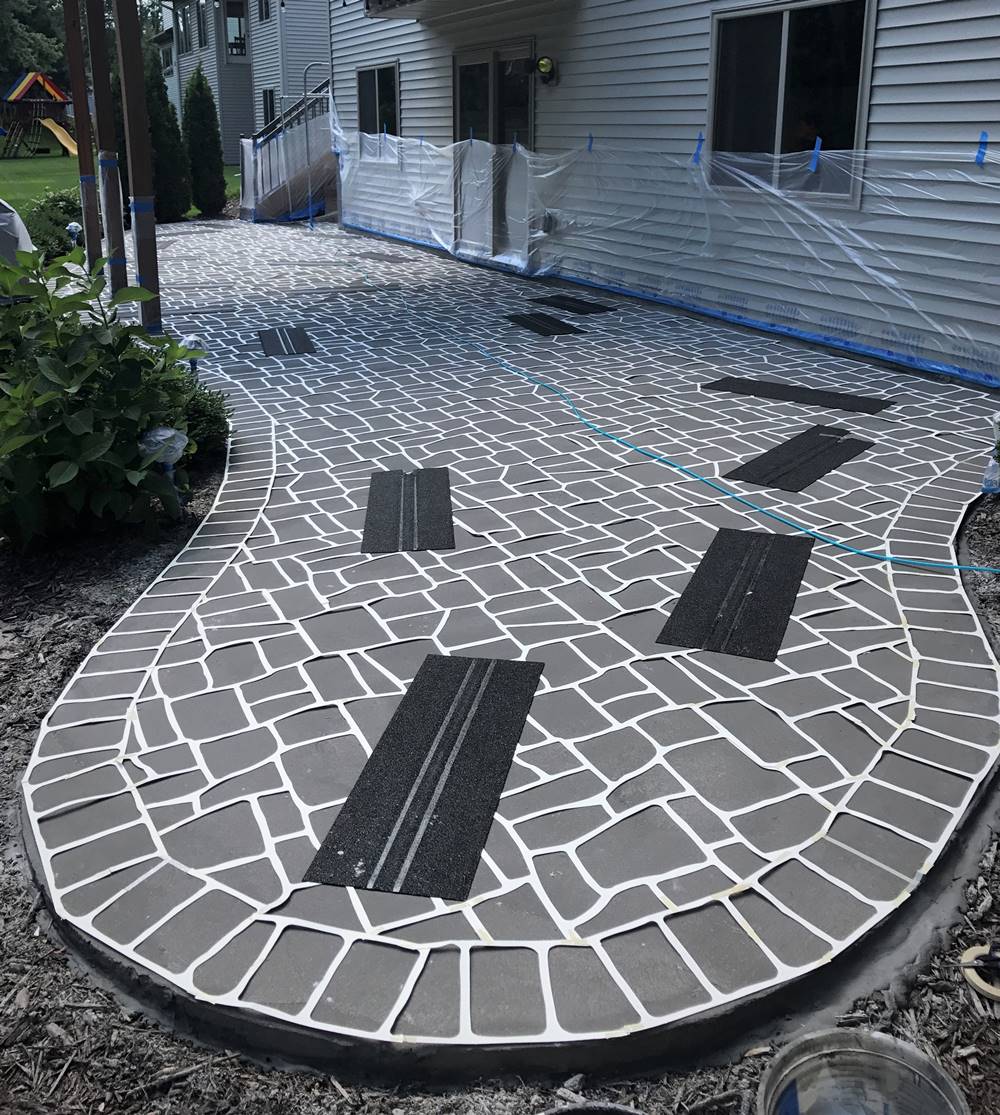
They return the next morning and spray-apply a lighter-colored cementitious mix onto the patio. After that coat dries in two to three hours, they pull up the stencil and do touch-ups.
Depending on the job, they’ll stain a border (if there is one) on the patio and apply the topcoat. For patio projects, Hicks says they’ll typically spray and back roll a high-solids solvent-based sealer, which dries in 24 hours.
Replicate This Look with Concrete Stencils
Offered by Concrete Decor Store Keystone - Concrete Stencil Roll
Keystone - Concrete Stencil Roll
by Decorative Concrete Impressions Paper Stencil for Concrete - Flagstone - 33-inch X 365 Foot
Paper Stencil for Concrete - Flagstone - 33-inch X 365 Foot
by Bon Tool Cobblestone Header - Concrete Stencil
Cobblestone Header - Concrete Stencil
by Decorative Concrete Impressions
